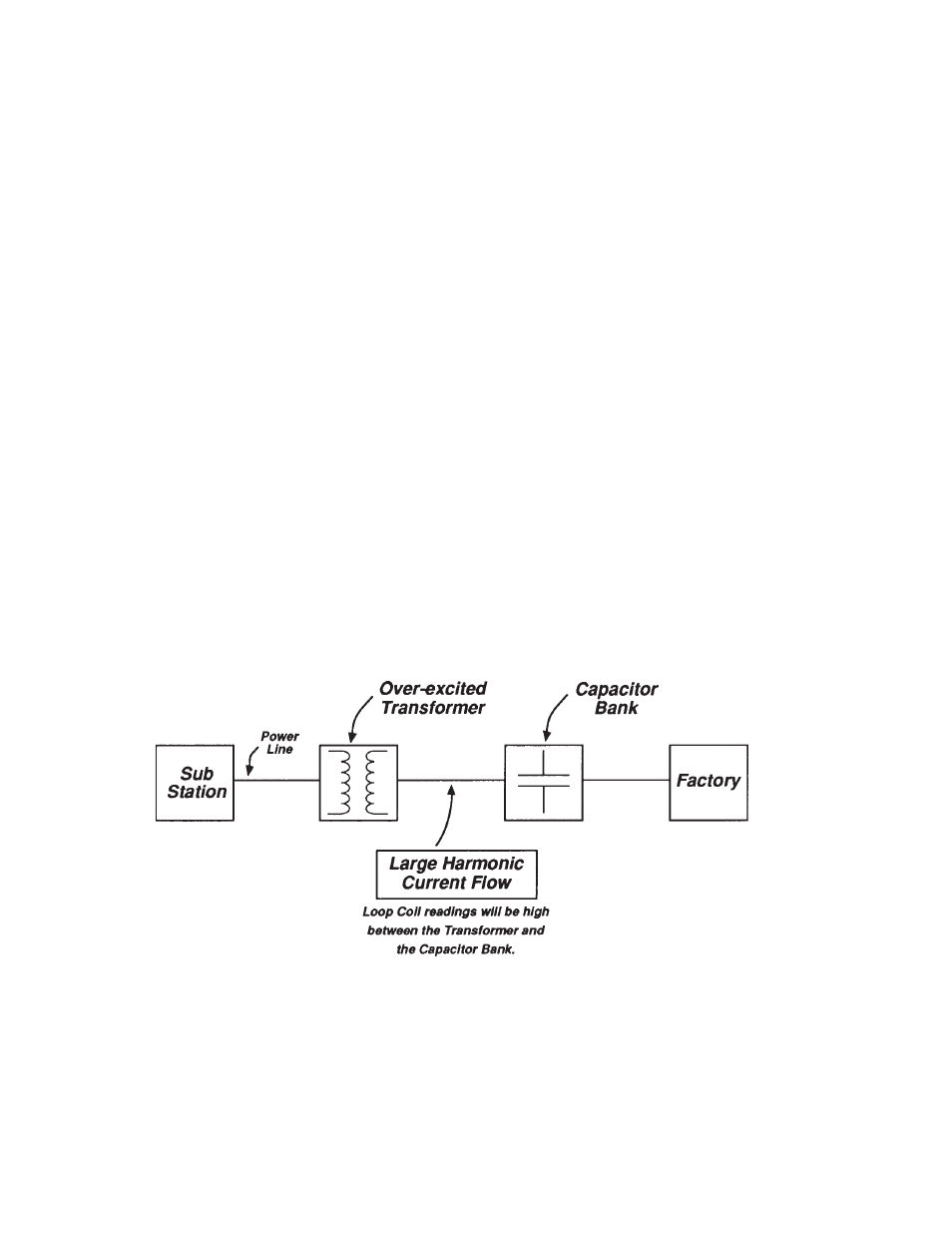Triplett Mitigator Loop Coil – 3232 User Manual
Page 14

What does this mean to us? It means that loads like industrial motors often don’t represent a very good
path for harmonic currents to flow through, i.e. they are a much better load to the 60Hz [50Hz] current
than they are to the harmonic currents.
9.6: CAPACITIVE REACTANCE: RESONANCE AND SINKS
Capacitors, on the other hand, are very good harmonic current loads. This is because capacitive reac-
tance goes down as frequency increases. Remember, current flows better in lower reactances.
Now is the ideal time to start talking about capacitors on the power line. Capacitors are employed by
the power company to improve the power factor of a power line. This is discussed in the MITIGATOR
Applications Manual. In that text, we talk about a condition called “resonance”, which can develop on
the power line. If a resonant condition exists on a power line, the reactance of the capacitor involved in
the resonant circuit, in combination with the inductance involved in the resonant circuit, is very low.
Consequently, a resonant condition may allow harmonic current to flow. Since resonance is a “tuned”
condition, it will be necessary for the resonant circuit to be tuned to a harmonic frequency for any
substantial current to flow. On the other hand, some harmonic current will flow even if the circuit is not
at resonance. In these cases, the capacitor may act as a “sink”.
Because capacitive reactance goes down as frequency increases, a capacitor acts as more of a load as
the harmonic frequencies increase. Consequently, a capacitor that is not in a resonant condition causes
current flow at all harmonic frequencies, not just a single predominant frequency, which occurs at reso-
nance. However, the amount of current flow at that single resonant frequency is usually much greater
than the total current flow of the harmonic currents flowing through a non-resonant circuit. This is
because the reactance of the resonant circuit is considerably lower than that of a non-resonant capaci-
tor circuit.
When a capacitor is allowing harmonic current to flow through it, and the circuit is not in resonance, the
capacitor is said to be acting as a “sink”. Figure 8 shows a simplified version of a common harmonic
current problem.
Figure 8
Elevated Harmonic Currents “Circulating” between
a Transformer and a Capacitor Bank.
A transformer is supplying power to a factory that uses a large number of induction motors. These
inductive loads cause the power line to have a very poor Power Factor (see MITIGATOR Applications
Manual). To compensate for this effect, the power company has added a capacitor bank to the line. The
capacitor bank, while correcting the 60Hz [50Hz] Power Factor, could cause a resonant circuit if condi-
tions are just right, but it will certainly act like a sink. Remember, none of this is of any consequence
13
